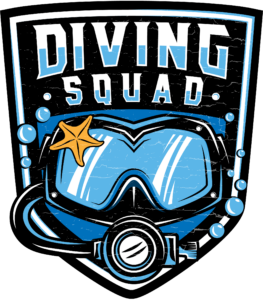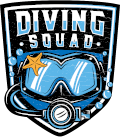
Best Great Barrier Reef Liveaboard Reviews (2024 EDITION)
LAST UPDATED:
If you’re wondering which is the best great barrier reef liveaboard of all time – spoiler: there’s no such thing!
Which will be the best liveaboard to scuba dive the great barrier reef for you depends on your budget, how much time you have and your level of diving experience.
There’s half a dozen GBR liveaboards to pick from and they’re all very different. Factors like price, onboard amenities and overall vibe vary massively.
To find the best great barrier liveaboard for you, you have two options:
Read our brutally honest, up to date Great Barrier Reef liveaboard Reviews.
Check our our Quick Comparison Table of GBR liveaboards.
Great Barrier Reef Liveaboard Reviews:
- Spoilsport runs a variety of superb trips with different themes; including Minke Whale expeditions, Shark Photography tours and Turtle Safaris. She’s of the only liveaboards that ventures to the Osprey Reef and northern Ribbon Reefs. Best of all, you get insane value for money with 4 – 5 dives a day!
- The cheapest Australian liveaboard of them all, Ocean Quest offers great value for money and beginner friendly trips aboard a spacious and comfortable boat. There’s some really cool experiences to be had, including bio-fluorescent dives – the closest you’ll ever come to an underwater rave!
- Coral Sea Dreaming has a lot going for her! She offers free introductory dive courses as well as intro night diving courses and scuba refresher courses! Plus, she is the joint second cheapest option, takes the smallest group size and running the shortest trips.
- Pro Dive Cairns (aka ScubaPro) is a great choice for divers who want to go on short and affordable trips, whilst still exploring some of the more alternative dive sites of the Outer Great Barrier Reef. The crew are very friendly and create a relaxed and fun atmosphere.
- An affordable, multi-share hostel on water for divers, Rum Runner offers fantastic 2 – 4 day itineraries to either the outer Great Barrier Reef or the very rarely visited Holmes Reef for shark expeditions which include a shark feed dive.
- The award winning Spirit of Freedom leads 3, 4 and 7 day trips to some of the most pristine and isolated dive sites of the Great Barrier Reef. She has the most common areas of all options and is the the only other liveaboard besides Spoilsport and Ocean Quest, that offers 4 – 5 dives every day.
Best Great Barrier Reef Liveaboards QUICK COMPARISON:
| Name: | Great for: | Price: | Max Group Size: | Longest Trip: | Shortest Trip: | Go to Booking Page: | |
|---|---|---|---|---|---|---|---|
| Spoilsport | 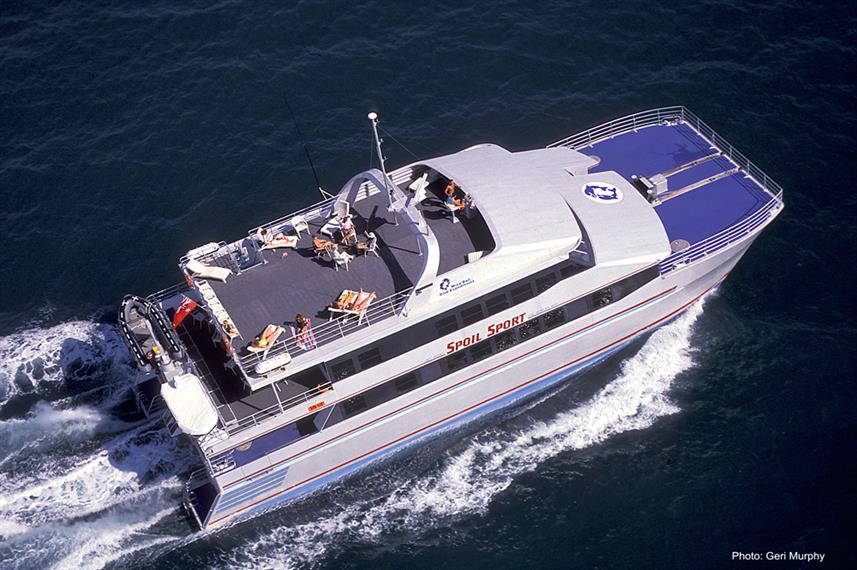 | Unique Trips, Value, Beginners, Couples, Singles | $$$ | 28 | 8 days | 4 days | Click Here |
| Spirit of Freedom | 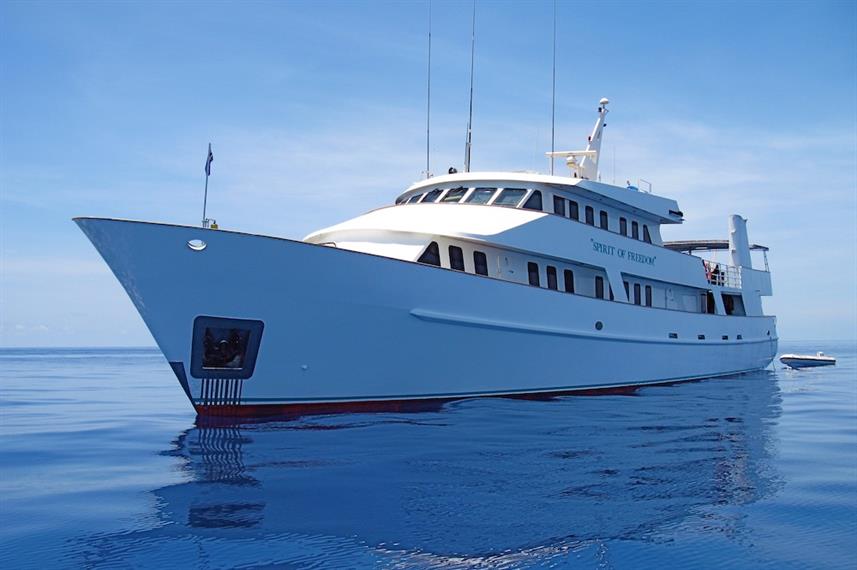 | Big Boat, Couples, Unique Trips, Value | $$$ | 26 | 8 days | 4 days | Click Here |
| Coral Sea Dreaming | 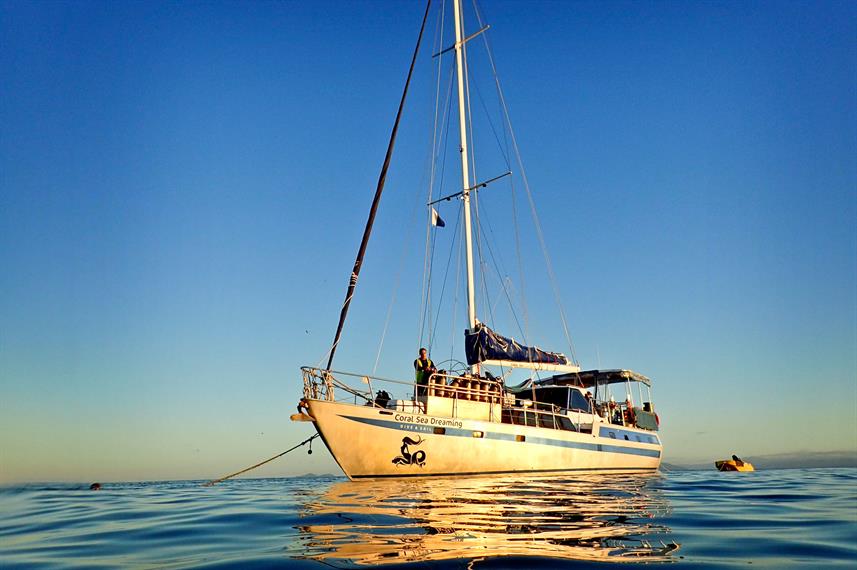 | Learning to Dive, Beginners, Cheap, Short Trips | $ | 12 | 2 days | 2 days | Click Here |
| Ocean Quest | 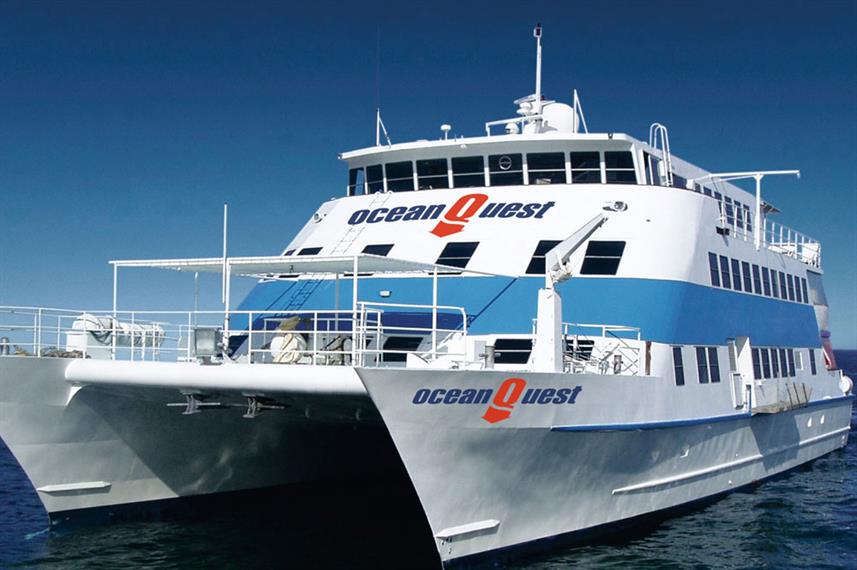 | Cheapest, Fluorescent Dives, Value, Beginners | $ | 48 | 6 days | 2 days | Click Here |
| Pro Dive Cairns (aka scubapro) | 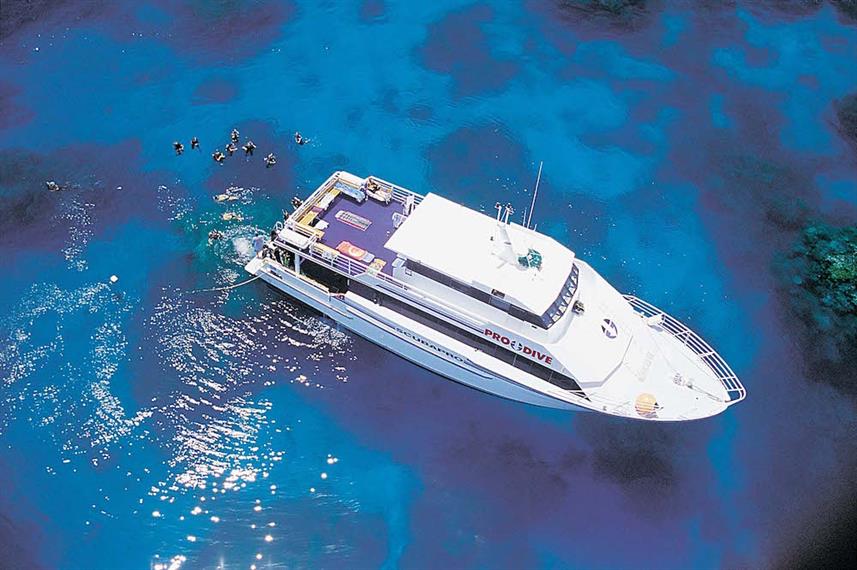 | Unique Trips, Singles, Big Boat | $$ | 32 | 3 days | 3 days | Click Here |
| Rum Runner | 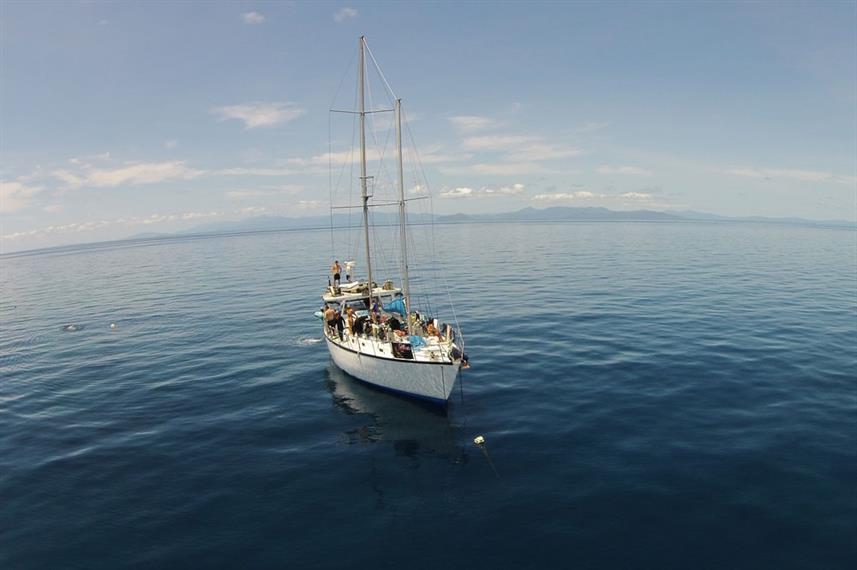 | Singles, Short Trips, Shark Feed Dive, Unique Trips | $ | 16 | 4 days | 2 days | Click Here |
Other Liveaboards in Australia:
There’s also a handful of diving liveaboards that operate in other parts of Australia, far away from the Great Barrier Reef.
These liveaboards tour some of the most remote and beautiful dive destinations of the entire continent; indeed areas that are far less frequented than the Great Barrier Reef and yet with coral reefs and marine biodiversity to easily rival it:
- This is the ultimate Australian liveaboard for exploring Ningaloo Reef, a UNESCO National Marine Park off Australia’s North-Western Coast. Guests can help photo ID manta rays, spot dugong and even go humpback whale watching (seasonal). Takes just 10 guests; in addition to diving, there’s also loads of snorkelling and kayaking!
- This liveaboard offers the longest possible trips, which are a mix of 50% diving and 50% sightseeing (dive on 7 days) around Rowley Shoals and the Kimberley Region. It’s a great option for groups with non-divers, although my favourite Rowley Shoals liveaboard is definitely Reef Prince!
Other Australian Liveaboards QUICK COMPARISON:
| Visit Site: | Liveaboard: | Great for: | Long Trip: | Short Trip: | Guests: | Tours | |
|---|---|---|---|---|---|---|---|
| Click Here | Shore Thing | 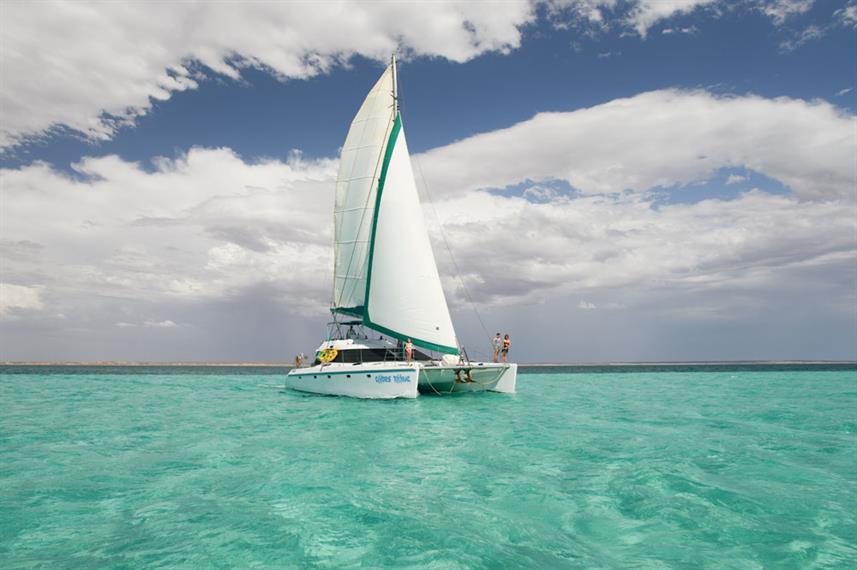 | Small Groups, Whale Watching, Manta Ray Photography, Beginners | 10 days | 4 days | 10 | Ningaloo Reef |
| Click Here | Reef Prince | 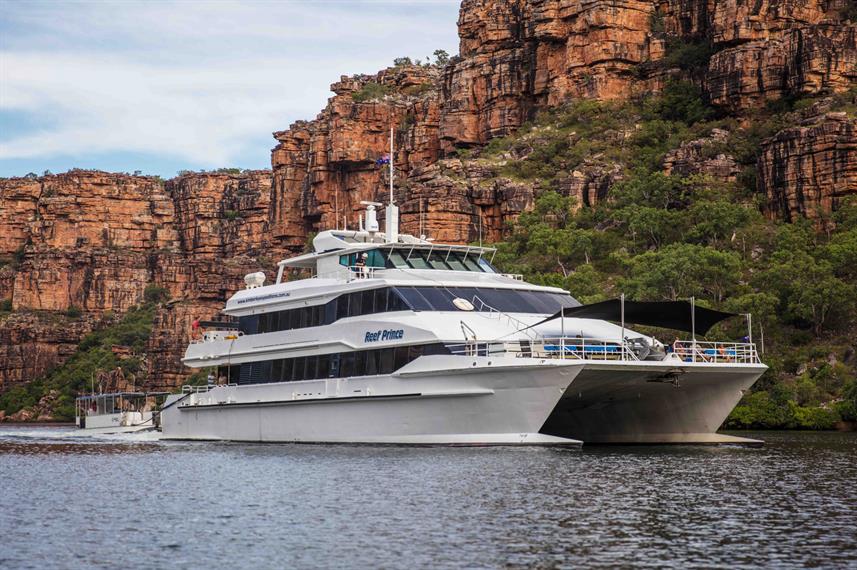 | Extra Activities, Watersports, Sightseeing, Non-Divers, Snorkelling | 11 days | 6 days | 36 | Rowley Shoals |
| Click Here | Odyssey | 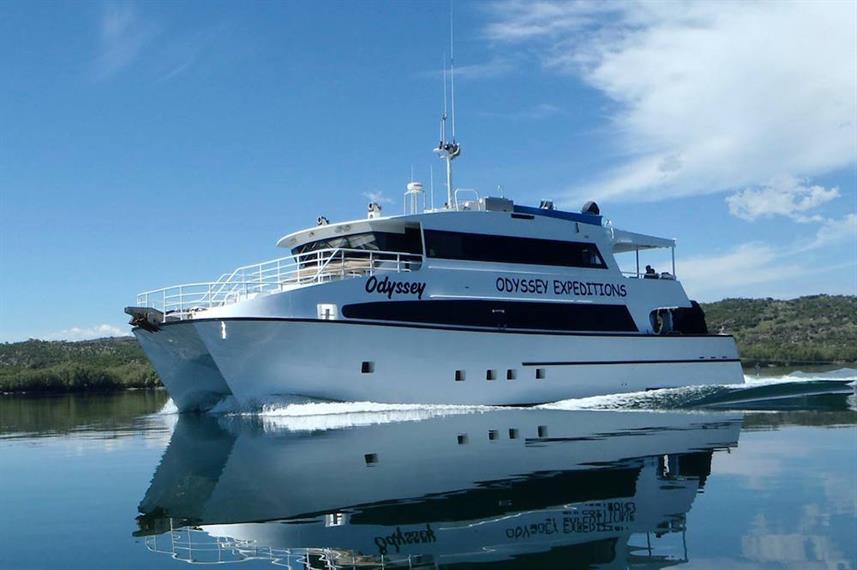 | Long Trips, Sightseeing, Non-Divers | 19 days | 8 days | 20 | Rowley Shoals |
Great Barrier Reef Diving - What's it like?
ATTENTION: Below is but a very brief description of the major dive sites of the Great Barrier Reef. For a far more all-encompassing page of just what it’s like to dive at the Great Barrier Reef – the major regions, animals encountered there and favourite dive sites, check out our main article on Scuba Diving the Great Barrier Reef.
Located in the Coral Sea off the coast of Queensland, Australia, the great barrier reef is the largest coral reef system in the world.
Formed of over 2,900 individual reefs and 900 islands it stretches for over 2,300km (1,400 mi) from the tip of the Cape York peninsula all the way down to Bundaberg.
It can be seen from space and is the world’s single biggest structure made by living organisms. Pretty impressive, right?
Little surprise therefore, that the great barrier reef has one of the richest marine environments on the planet.
Over 360 species of hard coral are found here, including bottlebrush coral, staghorn coral, bubble coral and brain coral.
It’s also home to over 1,500 species of fish and six of the seven species of marine turtle, including rare loggerhead and even rarer hawksbill turtles.
Scuba divers can also encounter numerous shark species like silky sharks, grey reef sharks, whale sharks and even hammerhead and tiger sharks here.
Around the southern edges of the great barrier reef, manta rays are frequently sighted and even dugong can sometimes be spotted in the reef’s shallow seagrass beds.
There’s also 5000 species of sponge, 600 echinoderms (starfish, sea stars and cucumbers), 10,000 mollusk species including giant clams…
..Not to mention sea snakes, cetaceans like humpback and dwarf minike whales, jellyfish, crustaceans and pelagic birds such as sacred kingfisher and eastern reef egret.
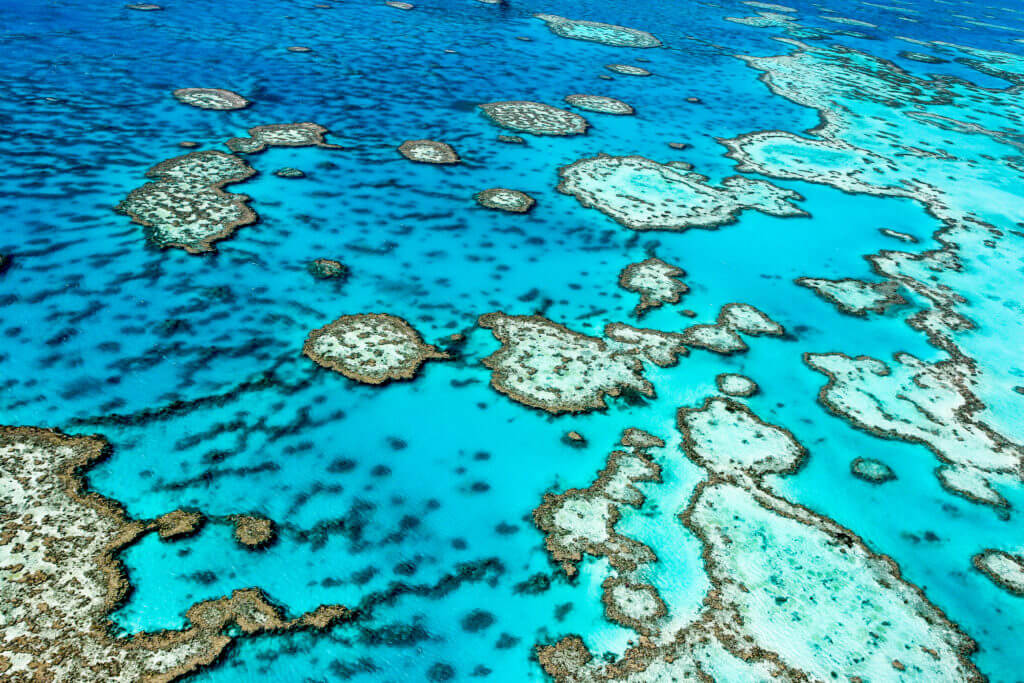
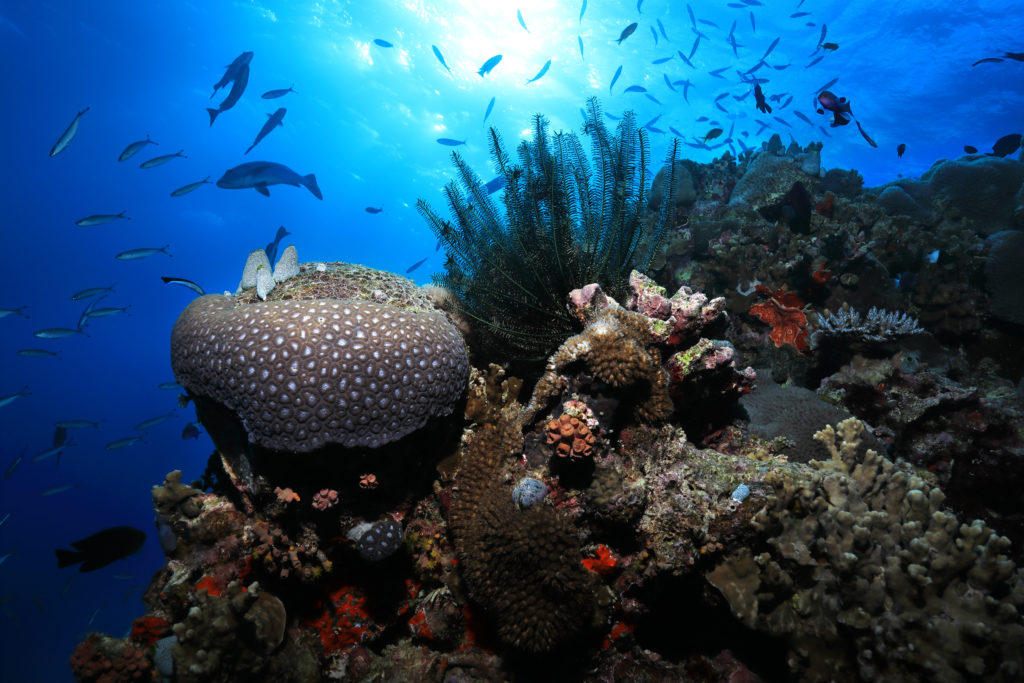
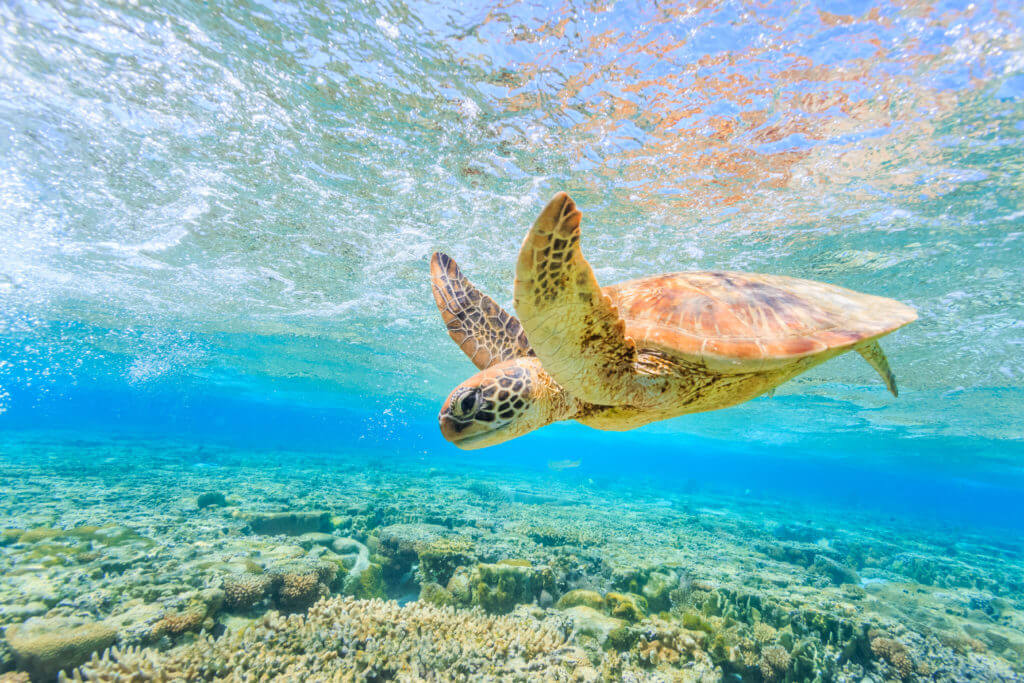
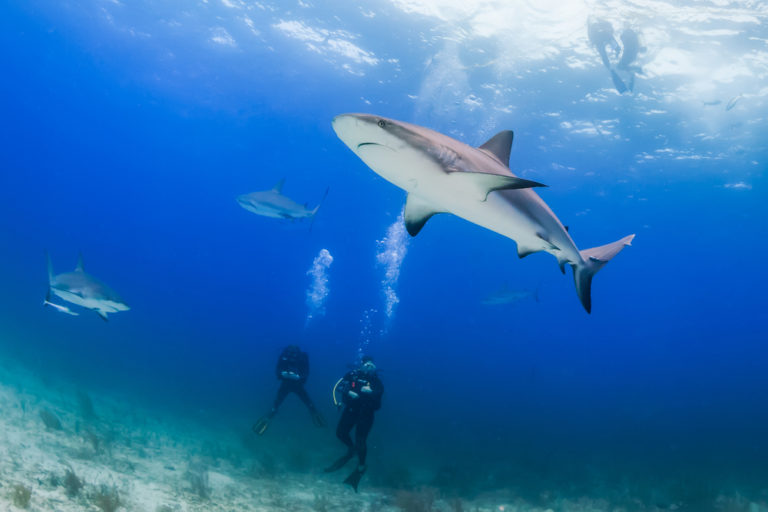
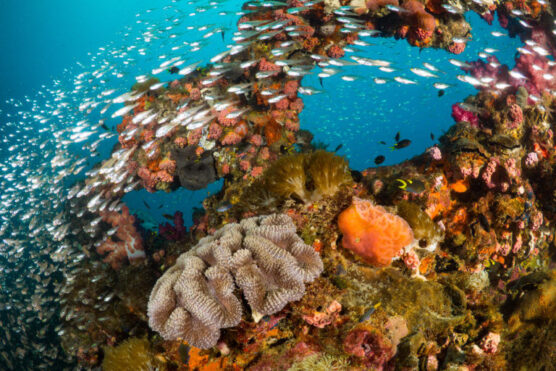
Although it’s possible to dive some of the inner reefs on a day trip from Carins, it’s the outer reefs that offer the most impressive biodiversity and healthiest coral reef.
Because the only way to reach the outer reefs is via liveaboard, there’s very few divers out here, meaning you’ll have the very best of the great barrier reef to yourself.
As for types of dive sites, the great barrier reef have em’ all! Most dive sites comprise epic coral gardens, pinnacles, bommies, channels and caverns.
That said, there’s also a variety of insane shipwrecks waiting to be explored as well as seagrass beds and cleaning stations for pelagics.
Another great thing about great barrier reef diving is that it’s suitable for all levels of diver, meaning beginners and advanced divers can enjoy this region.
That said, do be sure to check with your liveabaord on the level of diving experience required for the specific itinerary you’d like to undertake.
You can find out more about the Great Barrier Reef as well as alternative Australian scuba diving destinations that other visit liveaboards here.
Photo credit: http://travel.nationalgeographic.com/
Best time to visit the Great Barrier Reef
Whilst it’s possible to dive at the Great Barrier Reef all year round, some months offer calmer conditions than others. Furthermore, different months are better for spotting different marine life.
The best visibility, the least rain, and wind, is from August to December. Manta rays and hammerheads visit the Coral Sea from April to September. Minke whales make an appearance during June and July and this is the best time of year for a chance to swim with them. Coral spawning occurs in November or December.
These times also apply to Rowley Shoals & Ningaloo Reef. Find out more by reading on!
June – August: Crispy 70-80 degree Fahrenheit days, clear waters and cool evenings characterise Australia’s dry season. Temperatures are a little cooler during this period, due to the fact it’s winter in the southern hemisphere, but they rarely drop below 60 degrees.
With water temperatures at 22 degrees celcius, you’ll probably want a wetsuit. These months can get a little windy, so be sure to pack motion sickness tablets if you get sea sick.
This period is diving high season, so make sure to book your liveaboard in advance! Between June and July is also when divers have the best chance of spotting Minke and Humpback Whales!
September – December: Trade winds drop, resulting in calm water conditions, making this an excellent time to dive for beginners. It’s also a good period for spotting turtles, which tend to breed and nest between October – November.
In November, the reef often comes alive with decorator crabs, slipper lobsters and palao worms. By now, you can also ditch the wet suits! Many fish breed in December, so keep an eye out for eggs as well as aggressive Titan Triggerfsh!
January – February: This is as hot as it gets with temperatures rising up to 85 degrees Fahrenheit. This also marks the monsoon period, with possible torrential downpours of rain. However, water visibility in the outer reefs, which is where Australia liveaboards frequent, is still good.
March – May: March marks the start of stinger (jellyfish) season so you’ll need a stinger suit (your liveaboard will take care of this).
Although water temperature is still cool around March (about 28 degrees celcius), it does drop over april and may, meaning you’ll need a wetsuit. Also, March is when baby turtles hatch, which attracts many friendly sharks!
How to get there
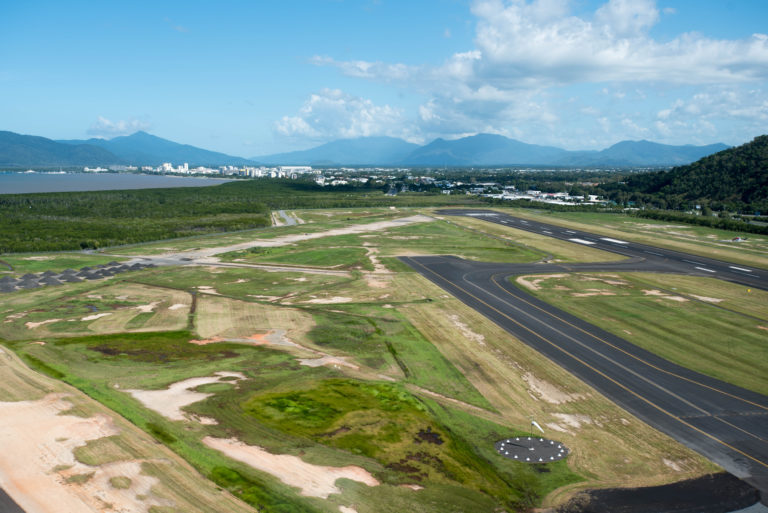
Great barrier reef liveaboards usually depart either from Cairns, a city located in the northern part of Queensland or Port Douglas, a small town just an hour away from cairns.
If you’re travelling from abroad, you’ll be pleased to hear that Cairns has it’s own airport (CNS), which accepts international, national and state air carriers. It’s also possible to reach Cairns via train with Queensland Rail or you could simply drive there.
The majority of liveaboards will be more than happy to arrange your transfer from Cairns to the point of departure, so be sure to ask them! You can find more information on Getting to Cairns here.
If you’re embarking upon an alternative Australian liveaboard:
- If you’re going on one that tours Rowley shoals (Reef Prince & Odyseey), you’ll want to get to Broome airport, Djugun. Your liveaboard will arrange pick up from here.
- If you are going on the Shore Thing liveaboard, which tours Ningaloo reef, you need to get to Learnmonth airport and from here board the vessel straight from your transfer.
Further details are provided on all of the liveaboards booking forms.
Our favourite website for booking cheap and flexible flights is without a doubt Sky Scanner!
Diving Destinations in Australia
READERS NOTE: For a far more detailed and intricate description of the major diving regions of the Great Barrier Reef and what each of them has to offer, check out this whale shark of an article on Scuba Diving the Great Barrier Reef.
Cairns Great Barrier Reef
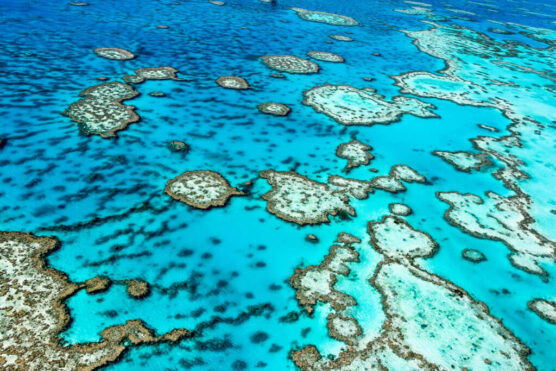
With sandstone formations covered with colourful corals, ledges, caverns, and pinnacles to explore, this is the most famous scuba diving destination in all of Australia.
Home to a number of amazing dive sites, it’s no wonder diving the Great Barrier Reef is so popular with the diving community.
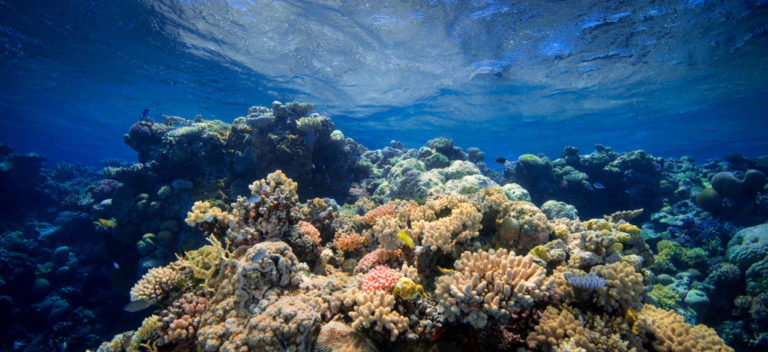
The Great Barrier Reef is comprised of picturesque tropical islands with some of the worlds most beautiful sun-soaked, golden beaches. A true beauty, one that not every traveler to Australia gets to experience, lies below the waves…
The colorful reefs around Flynn and Milln are perfect for spotting reef sharks, sea turtles, and macro critters, like ribbon eel.
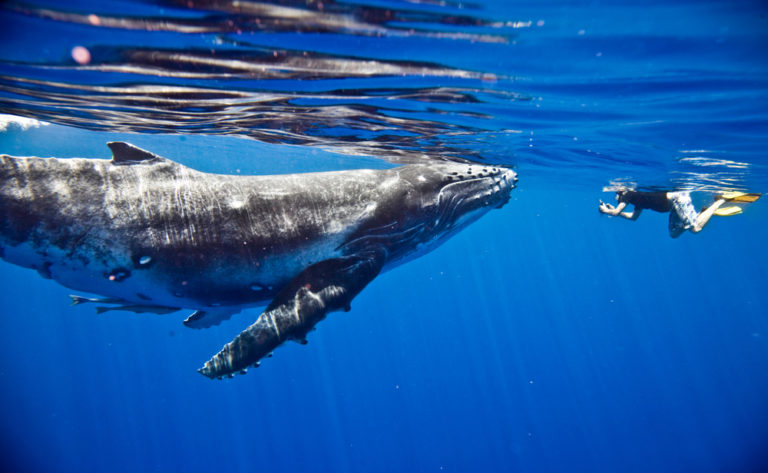
The Great Barrier Reef also hosts some incredible night diving opportunities, thanks to its calm conditions and easy to navigate landscape of bommies, pinnacles, and sand. These conditions also make the Great Barrier Reef an excellent destination for beginner divers.
Further away from the shore, Pellowe Reef promises more experienced divers some much-anticipated pelagic action. Schooling barracuda, Napoleon wrasse, and jacks make regular appearances, while manta rays and whale sharks are often spotted during colder months, as they migrate through the region.
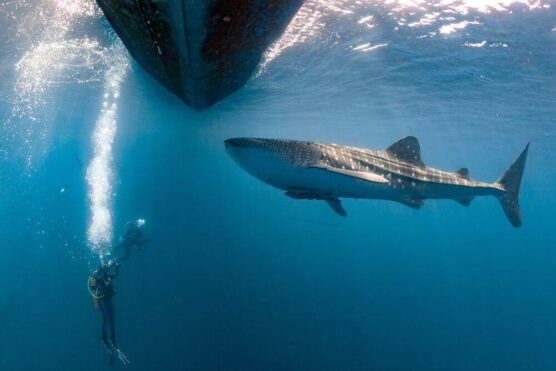
Diving in the Great Barrier Reef is mindblowing! Coral cays and continental islands, and even a famous artificial reef: the wreck of the SS Yongala. The wreck, which sank in 1911, is an isolated artificial reef that really attracts large schools of batfish and barracuda, swarms of jacks and even some sea snakes.
We can tell you how crystal clear the waters are, we can sing the colorful coral gardens’ praises all we like… We could even tell you that the Great Barrier Reef will redefine your idea of paradise. Or you could just go and experience it for yourself.

Coral Sea:
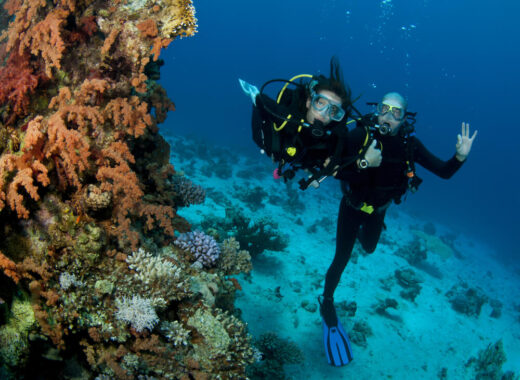
A marginal region of the South Pacific, the Coral Sea stretches from the Great Barrier Reef on the northeastern coast of Australia out to the islands of Vanuatu, the Solomon Islands, and New Caledonia.
The Coral Sea is a region of plunging depths and seamounts rising steeply from the ocean floor, attracting pelagics like Hammerheads, and providing divers with excellent wall diving with around 40 m of visibility.
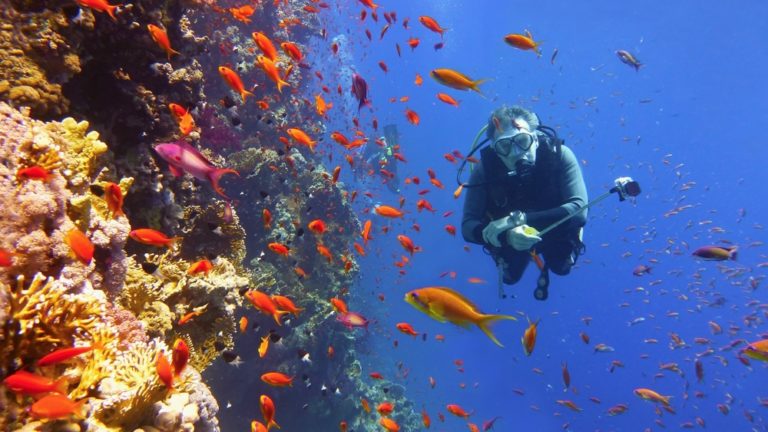
For beginners, this site is ideal. Newbie divers will have so much all around them to discover with no real need to feel left out if they can’t dive any deeper. Resident barracuda and schooling bigeye trevally are just two of the species to look forward to encountering.
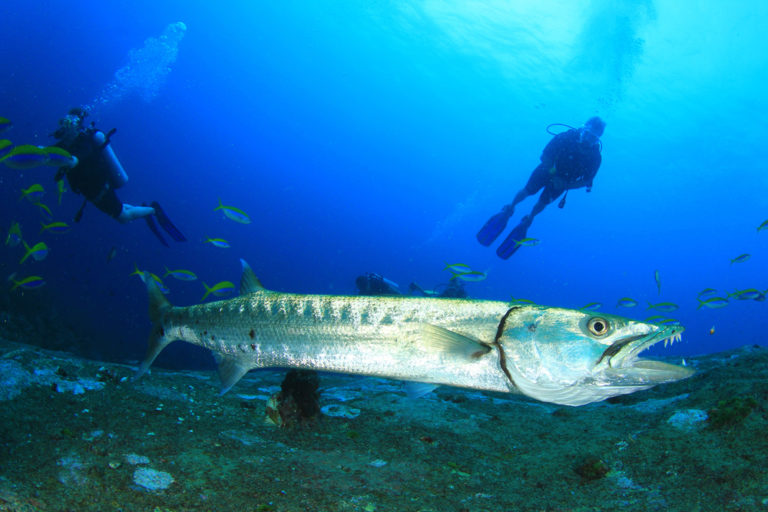
Osprey Reef is a submerged atoll, sitting around 63 km away from any other reefs. Here, experienced divers will find vertical walls which rise from the deep, attracting many sharks. Grey reef, whitetip reef, and the occasional silvertip sharks have all been spotted on these exciting dives.

Encompassing some of the most popular and famous dive sites known to Australia, this is an overall amazing dive destination for divers of all levels, however, experienced divers will have even more diving opportunities here.
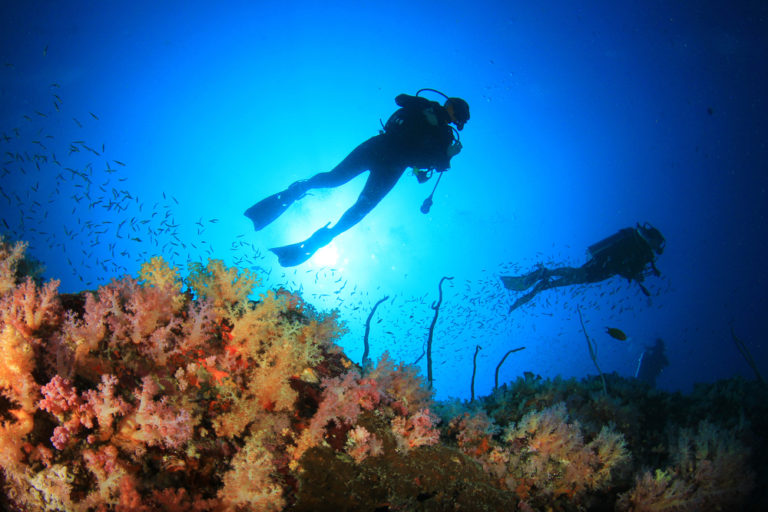
Ningaloo Reef
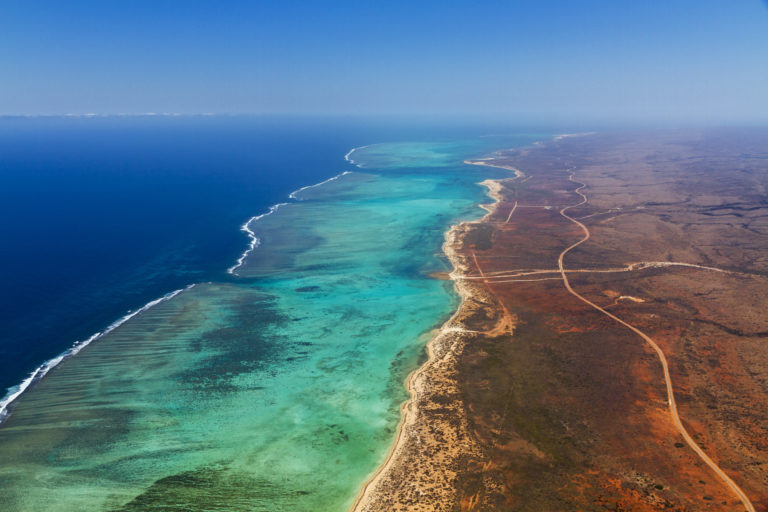
Located in the north-west coastal region of Australia, Ningaloo Reef is a UNESCO World Heritage site. It is extremely isolated and has both amazing land expedition opportunities, as well as an abundantly beautiful marine life.
The distinctive Ningaloo Reef fringing the Ningaloo Coast is 260km (160 mi) long and is both Australias’ largest fringing coral reef as well as it’s only reef positioned so close to a landmass. This means many of the dives around here are shallow, making it ideal for inexperienced divers.
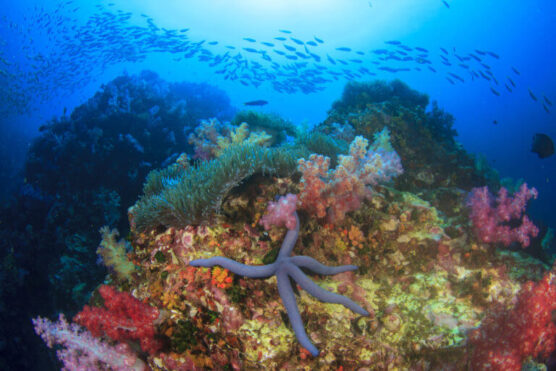
Ultimately, although not as big as the Great Barrier Reef, Ningaloo Reef is more isolated and arguably the coral there is in even more pristine condition.
The special protection afforded to many of the marine areas here means that the ocean biodiversity is next level and it is one of the best places in the world to spot whale sharks.
There are also many epic sightseeing opportunities in this region. You can visit a hidden and very interesting Aboriginal Wandjina rock art gallery, try your luck at fishing and exploring the beaches, or explore Bigge Island which posses a stunning display of the distinctive and relatively modern Aboriginal rock art in beach caves.
The only liveaboard that tours here is Shore Thing.
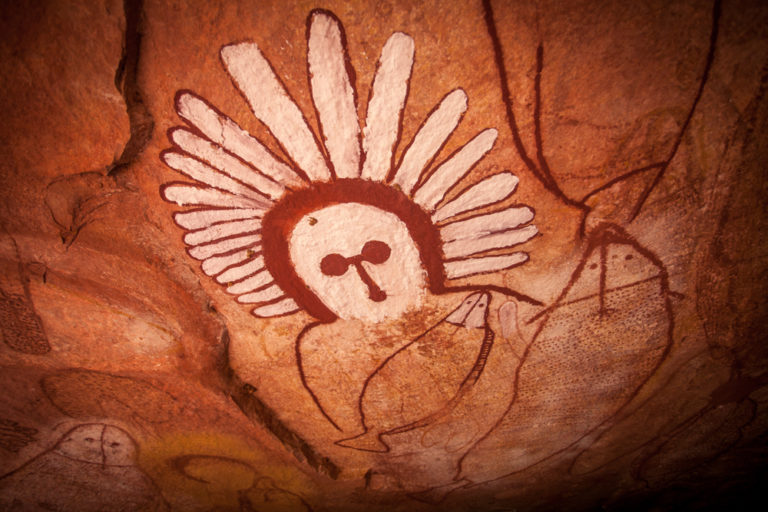
Rowley Shoals
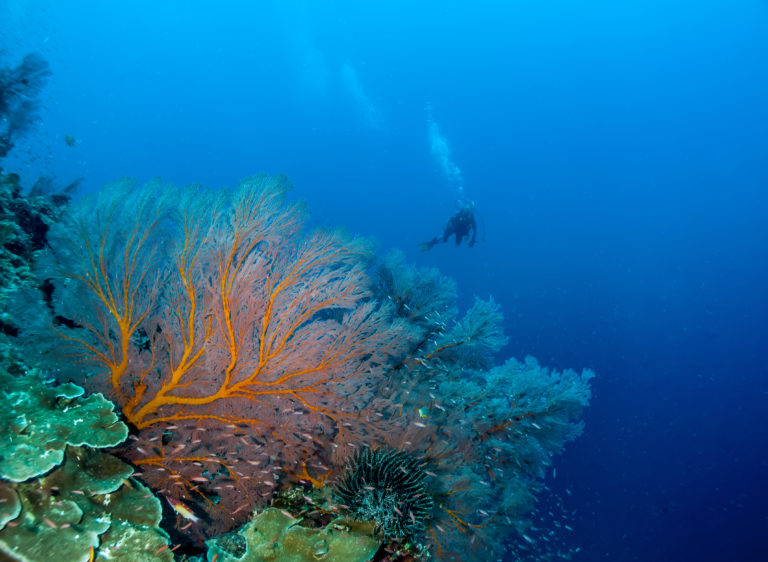
Also located in North West Australia, but this time much further from the coast, Rowley Shoals is a marine park comprised of 3 separate atoll-like coral reefs, each one covering an area between 80 and 90 km squared (31 – 35 sq mi).
Catered to the more experienced diver, the Rowley Shoals are legendary in diving circles for their breathtaking wall dives, phenomenal visibility and extreme seclusion – less than 200 people come here a year, meaning you’re extremely unlikely to run into any other divers!
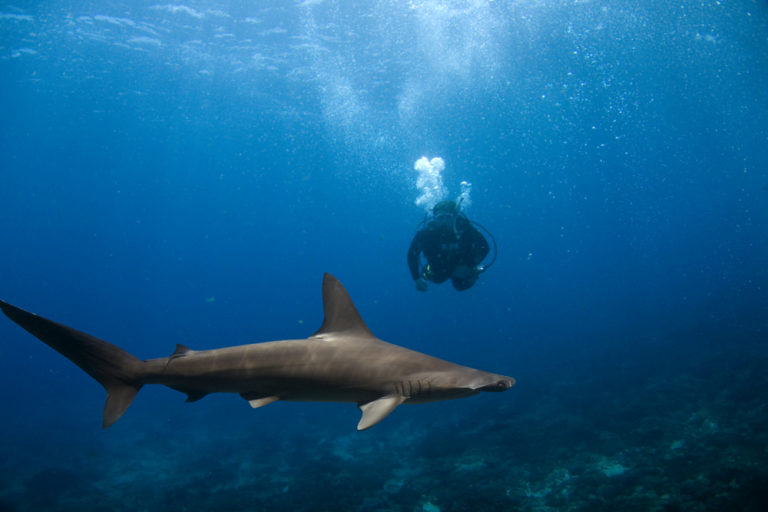
Both Odyssey and Reef Prince visit this diving destination – as part of the itinerary they also explore the coastal areas along the Kimberley, Western Australia’s, sparsely populated northern region. The Kimberley is famous for incredible sights such as the horizontal falls (pictured below) kimberley falls, aboriginal rock art and hauntingly beautiful landscapes.

Diving Squad Debriefing
Ahoy, Diving Squad! Well done, you’ve finally reached the end of your Australian liveaboard pre-journey! Now it’s time to really get the ball rolling and book the actual trip!
We’ve covered everything you need to know about choosing the right aussie liveaboard for you – both at the great barrier reef and alternative locations and we’ve reviewed every scuba diving liveabaord currently operating right now.
You can rest assured that we constantly check and update our information, meaning that everything you’ve read here today reflects the very latest information about Australian liveaboards.
If you do have any more questions or if you’d like one of our team to personally assist you with choosing the right liveaboard for you, please do reach out to us via our contact form.
Peace.
Some of the links in our content are affiliate links. This means that if you buy a product, book a liveaboard, book accommodation or purchase insurance, we earn a small commission at no extra cost to you. Thanks!
Written by:
Alex
